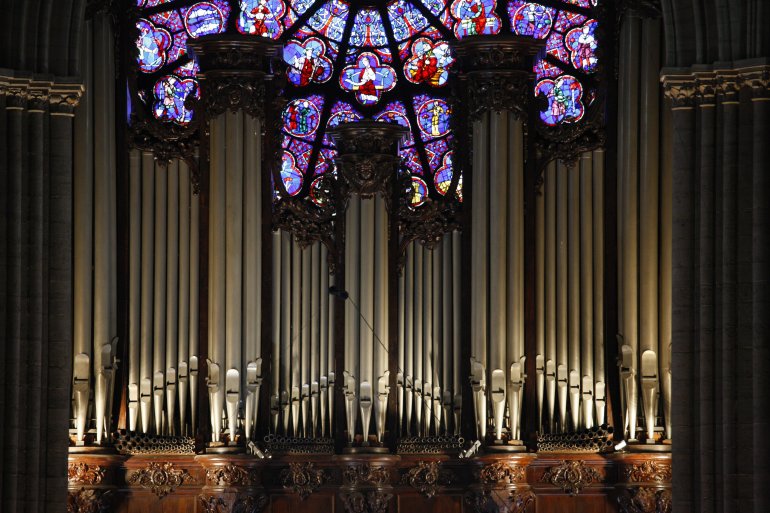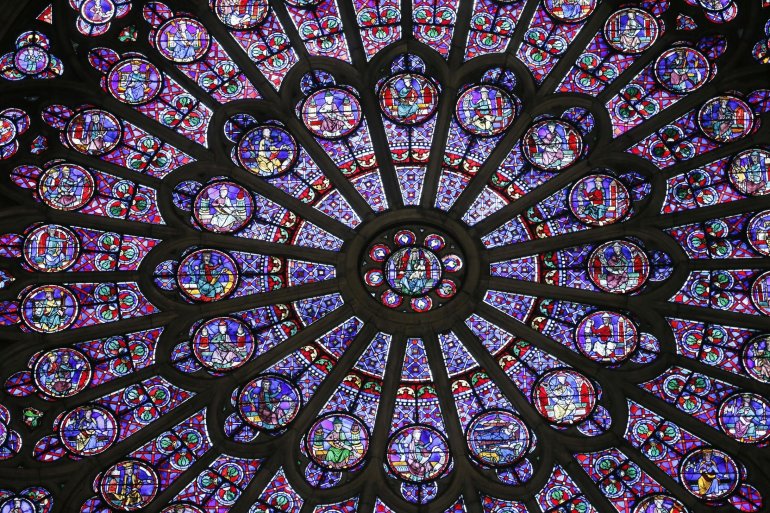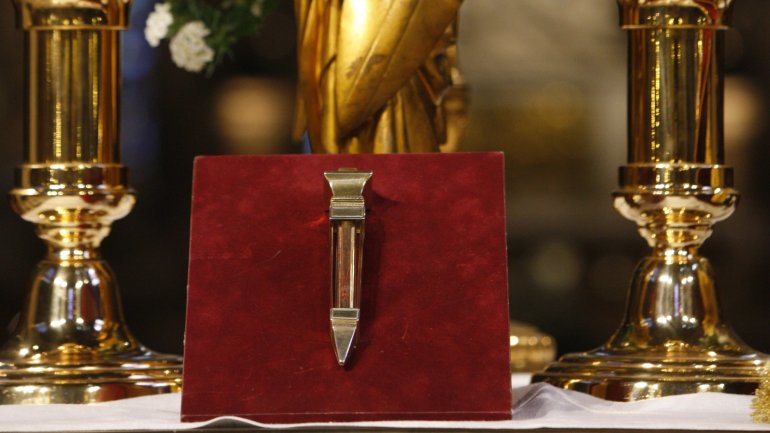The cathedral of Notre Dame in Paris is home to numerous artifacts, works of art and religious relics that each tell a story.
As a devastating fire tore through the cathedral on Monday, toppling its spire, many feared the items — collected over the centuries — might be lost.
Here’s an overview of some of the revered Gothic cathedral‘s most noteworthy features.
• The Great Organ has been replaced and updated several times throughout history. The position of titular organist, or head organist, carries great prestige in France and around the world.

• The Rose Windows are a trio of immense round windows over the cathedral’s three main portals.

• Numerous sculptures, statues and paintings inside the cathedral depict Biblical scenes and saints.
One series of 76 paintings, each nearly four meters tall, commemorates the New Testament’s Acts of the Apostles, including the crucifixion of St. Peter and the conversion of St. Paul. The works were completed between 1630 and 1707 by the members or associates of the Royal Academy of Painting and Sculpture.
Another painting is from a series by Jean Jouvenet depicting the life of the Virgin Mary. All six from the series used to be in the cathedral. They were moved to the Louvre in the 1860s, and only “The Visitation” was returned to Notre Dame.
• The twin bell towers, first constructed in the 13th century, were the tallest structures in Paris until the completion of the Eiffel Tower in the late 19th century.
• The cathedral’s main bell, Emanuelle, has marked significant moments in French history, such as the end of World War II, as well as holidays and special occasions.
• The cathedral’s treasury contains several artifacts sacred in Christianity, including what is believed to be the Crown of Thorns, a fragment of the True Cross and one of the Holy Nails.

• On the cathedral’s exterior, a menagerie of menacing gargoyles and chimères stand guard.



























